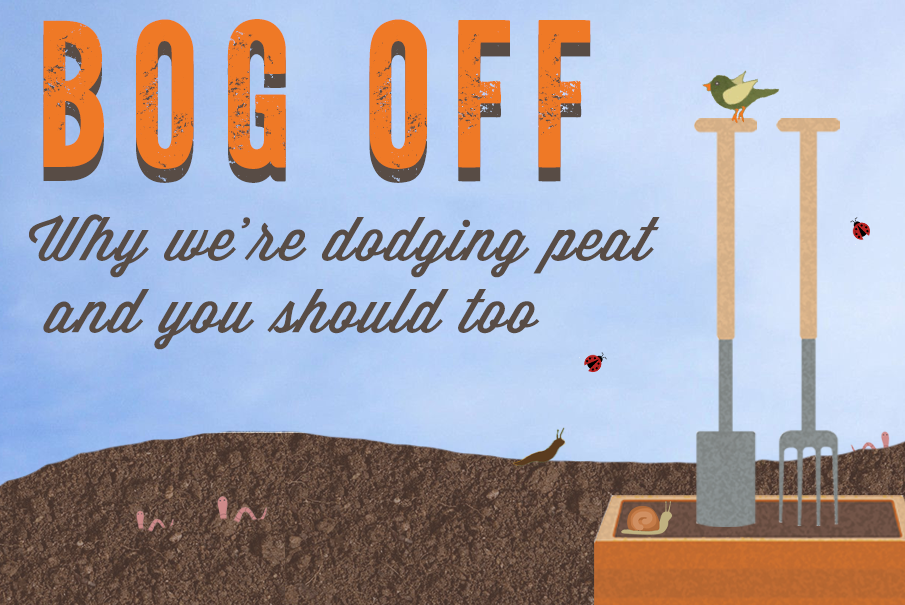BOG OFF - Why We're Dodging Peat and You Should Too

Peat is one of the most problematic gardening materials. From 2024, using peat will be banned and by 2028, the whole of the horticultural industry will cease all use of it.
Whether you are new to gardening or you’re a seasoned grower, you have likely heard the term ‘peat free’ bandied about, either at the garden centre, by other gardeners or as a selling point on garden products.
However, not everyone is clued up on the problems with peat, why we’re trying to go peat free and how we can go about implementing it into our gardening routines.

THE PROBLEM WITH PEAT
Peat is a dark, earthy material which has been used in gardening products such as compost since the early 1900s to help improve growth in acid loving plants. Found in bogs and formed in the breakdown of vegetation over 1000s of years, this resource is irreplaceable. Known for being one of the best stores of carbon, peatlands hold an incredibly important role in minimising climate change.
The problem? When peatlands are mined, the greenhouse gases they hold are released. This starts from the moment the peat is mined and continues to release when spread onto a garden or field.
On top of this, by disturbing the ecosystem in the mined wetlands, the biodiversity of unique and rare bird species, bugs and plants is at risk of becoming endangered.
So when we talk about going peat free, we mean using renewable resources for our gardens - specifically ones which don’t cause further global warming or harm wildlife.
HOW CAN I GO PEAT FREE?
1. Look for peat free symbolsProducts which are peat free tend to shout about it. This means that the packaging will have the words ‘peat free’ printed on it, and usually in big, bold letters. If you can’t spot these words on the packet, it’s quite likely that this product contains peat.


![]()
2. Make your own compost
From fruits cores to vegetables peelings, the foundation for good compost can start at home. Pick up a kitchen caddy here to start the process and once full, unload it into your garden or allotment composter. We’d call this one the long game but it is so worth it. By installing a garden composter, you can reduce waste and create your own nutrient rich compost.
OUR FAVOURITE PEAT FREE PRODUCTS
Made on a traditional hill farm in the Lake District, this compost is 100% sustainable and entirely free of peat. Dalefoot composts are made from wool, comfrey and bracken. Wondering why they use wool? Well, here are just some of the benefits:
- High natural levels of potassium - a major plant nutrient
- Excellent water retention
- Similar soft texture to peat
- Made from totally renewable sources, according to an old gardening recipe
- Carbon neutral
- Suitable for all plants, including fruit, vegetables and flowers

BLOOMIN’ AMAZING SOIL IMPROVER
This eco-friendly soil improver and mulch deters both slugs and weeds whilst feeding plants with the nutrients they need to thrive and retain water in the soil – what more could a gardener want?
A by-product of biogas production on the Duchy of Cornwall Estate, this peat-free soil conditioner is ideal for growing perennials, vegetables and fruit bushes, as well as successfully establishing new roses, trees and shrubs.

Offering a brilliant alternative to plastic, the fibre pots can be planted directly into the ground so you can save time on repotting and cut down on your waste. Not needing to repot your seedlings and plants also means that there will be less root disturbance, resulting in stronger plants.

Have you gone peat free yet? If you have any questions or comments, we’d love to hear from you in the comments below!
If you enjoyed this, you might like our blog on ‘7 Ways to Reduce Plastic in your Garden’. Click here to have a read.